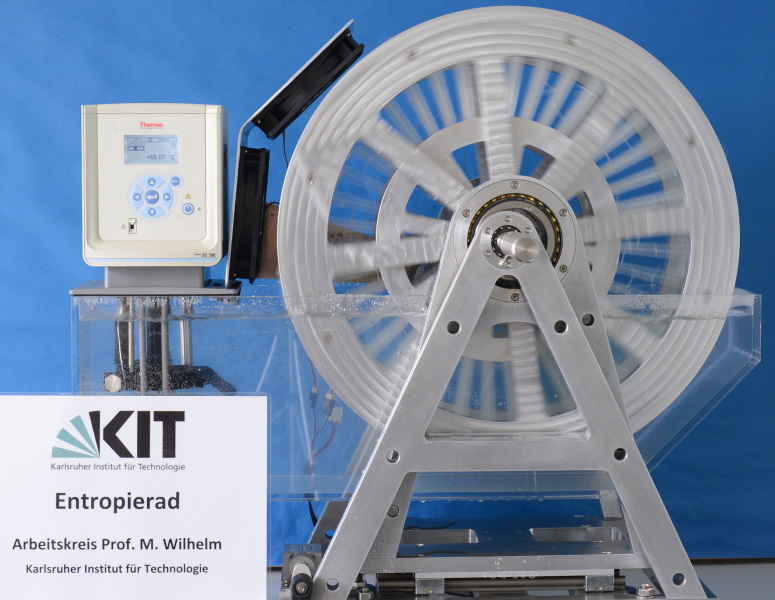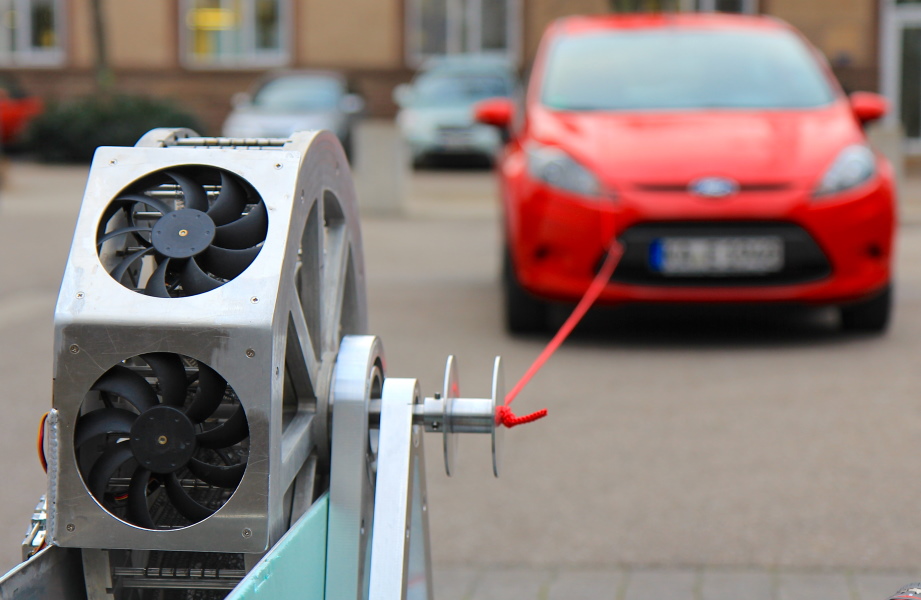The entropy wheel is a heat engine developed by Prof. Wilhelm's working group which, thanks to a new operating principle, requires only small temperature differences of 40° to 80° C to generate mechanical energy.
The potential area of application of the entropy wheel is the utilization of residual heat from industrial plants, which can currently no longer be carried out economically efficiently at temperatures of less than 100°C.
In the original version, the functional principle of the entropy wheel is based on the utilization of a special property of elastomers: Under mechanical load, the bond distances do not change in elastomers, as is the case with metals, for example, but only the configuration of the polymer chains, i.e. the entropy of the system. A change in entropy is therefore converted into mechanical force, hence the name entropy wheel.
Operating principle - origin of the name
The operating principle (see fig.1) is based on a special property of elastomers: Mechanical load causes stretching. In metals, bond gaps are increased, in elastomers coiled polymer chains are stretched. Therefore, no energy is changed during stretching, only the entropy causes the reacting forces.
Entropy wheel based on elastomers
For the generation of mechanical energy higher torques are required. Therefore, a reconstruction of the wheel and an optimization of the elastomers in use have been perfomerd over the last years. In addition, an alternative construction is using water streams is shown.
Entropy wheel based on shape-memory alloys
Comprehensive tests carried out on different materials enabled the development on an further improved entropy wheel: The usage of shape-memory alloys (SMA) creates more torque than the one of the actual available elastomers.
With the usage of springs made from Nitinol enough torque can be generated to pull a passender car.



